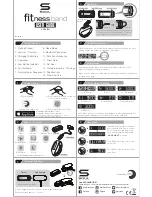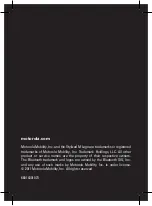
200
Style/Pad Record
Main page - Record 1
NTT Area
NTT Type/Table
NTTs (Note Transposition Tables) are the sophisticated algo-
rithms that allow Korg arrangers to convert recognized chords
into musical patterns. The Note Transposition Table (NTT)
determines how the arranger will transpose pattern notes, when
a chord is recognized that does not exactly match the original
chord of a Chord Variation. For example, if you only recorded a
Chord Variation for the CMaj chord, when a CMaj7 is recog-
nized on the keyboard the arranger must transpose some notes
to create the missing 7th.
Note:
These parameters cannot be selected with Drum or Percus-
sion tracks, and are therefore greyed out.
Note:
NTT parameters are separately programmed for each track
of the Style Element.
There are two general types of NTTs:
• When
Parallel
types are selected, notes are transposed inside
the area set by the Wrap Around parameter. These tables are ide-
ally suited to melody parts.
• When
Fixed
types are selected, the arranger moves as few notes
as possible, making legato lines and chord changes more natural.
They are ideally suited to chord tracks (strings, piano etc…).
Note:
To conform to Korg specifications, it is advisable to set the
NTT to “No Transpose” on the Intro 1 and Ending 1.
Parallel/Root The root note (in CMaj = C) is transposed to the
missing notes.
Parallel/Fifth The 5th note (in CMaj = G) is transposed to the
missing notes.
Parallel/i-Series
All original patterns must be programmed on the
“Maj7” or “min7” chords. When loading old Korg
i-Series Styles, this option is automatically
selected.
Parallel/No Transpose
The chord is not modified, and is moved to the
new key unchanged. The pattern plays exactly the
recorded notes, and is moved to the new key as is.
This is the standard setting of Intro 1 and Ending
1 in Korg’s original Styles (where a chord progres-
sion is usually recorded, and should remain
unchanged in any key).
Fixed/Chord This table moves as few notes as possible, making
legato lines and chord changes more natural. It is
ideally suited to chord tracks (strings, piano
etc…). Contrary to the Parallel mode, the pro-
grammed chord is not transposed according to
the Wrap Around parameter, but always stays
around its original position, looking for common
notes between the chords.
Fixed/No Transpose
The programmed notes can only be transposed
by the Master Transpose. They are never trans-
posed when chords are changed.
as written
as played back
as written
as played back
As recorded with
NTT = Root or 5t h
(Key/Chord = C)
When you play a C7
with NTT = Root
When you play a C7
with NTT = 5th
As recorded with
NTT = i-Series
(Key/Chord = CM7 )
When you play a C
with NTT = i-Series
When you play a C7
with NTT = i-Series
Pa300 User Manual v150 (English).book Page 200 Saturday, March 29, 2014 5:29 PM
Summary of Contents for Pa300
Page 2: ...Pa300 User Manual v150 English book Page II Saturday March 29 2014 5 29 PM ...
Page 9: ...Pa300 User Manual v150 English book Page 5 Saturday March 29 2014 5 29 PM ...
Page 31: ...Pa300 User Manual v150 English book Page 27 Saturday March 29 2014 5 29 PM ...
Page 85: ...Pa300 User Manual v150 English book Page 81 Saturday March 29 2014 5 29 PM ...
Page 265: ...Pa300 User Manual v150 English book Page 261 Saturday March 29 2014 5 29 PM ...
Page 376: ...372 Index Pa300 User Manual v150 English book Page 372 Saturday March 29 2014 5 29 PM ...
Page 377: ...Pa300 User Manual v150 English book Page III Saturday March 29 2014 5 29 PM ...
















































